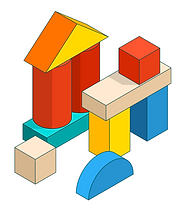Grade 2 Academic Situations
Numbers and Operations
Key Points:
Students use their understanding of addition to develop fluency with addition and subtraction within 100. They solve problems within 1000 by applying their understanding of models for addition and subtraction, and they develop, discuss, and use efficient, accurate, and generalizable methods to compute sums and differences of whole numbers in base-ten notation, using their understanding of place value and the properties of operations. They select and accurately apply methods that are appropriate for the context and the numbers involved to mentally calculate sums and differences for numbers with only tens or only hundreds.

Common Struggles:
-
Non-standard format: The essence is irregular handwriting. Aligning the same numerical positions incorrectly leads to errors in the process and consequently incorrect results. A strict standard needs to be adhered to.
-
Insufficient practice: Lack of calculation proficiency leads to slow computation speed, especially in multi-digit addition and subtraction calculations that involve carrying over and borrowing. Practice is essential!
-
Carelessness: Numbers are misread, and digits are copied incorrectly.
Solution:
Calculation is the foundation of everything. Not mastering it well will also affect the learning of other modules. For example, calculating geometrical areas and unit conversions both involve multiplication and division.
Learning addition and subtraction within a thousand is the basis for mastering addition and subtraction within ten thousand, as well as multiplication and division of multi-digit numbers. This is because the arithmetic behind addition and subtraction within ten thousand is the same as within a thousand; it's just that the number of digits increases. Similarly, multi-digit addition and subtraction are also used in multi-digit multiplication and division.
Geometry
Key Points:
Students describe and analyze shapes by examining their sides and angles. Students investigate, describe, and reason about decomposing and combining shapes to make other shapes. Through building, drawing, and analyzing two- and three-dimensional shapes, students develop a foundation for understanding area, volume, congruence, similarity, and symmetry in later grades.

Common Struggles:
-
Reason with shapes and their attributes.
-
Recognize and draw shapes having specified attributes, such as a given number of angles or a given number of equal faces.5 Identify triangles, quadrilaterals, pentagons, hexagons, and cubes.
-
Partition a rectangle into rows and columns of same-size squares and count to find the total number of them.
-
Partition circles and rectangles into two, three, or four equal shares, describe the shares using the words halves, thirds, half of, a third of, etc., and describe the whole as two halves, three thirds, four fourths.
-
Recognize that equal shares of identical wholes need not have the
same shape.
Solution:
Starting with actual objects from everyday life, students can concretely understand solid shapes and begin to classify them. This lays a solid foundation for later observing solid figures and understanding their characteristics.
Measurement and Data
Key Points:
Students recognize the need for standard units of measure (centimeter and inch) and they use rulers and other measurement tools with the understanding that linear measure involves an iteration of units. They recognize that the smaller the unit, the more iterations they need to cover a given length.
Work with time and money: Tell and write time from analog and digital clocks to the nearest five minutes, using a.m. and p.m.
Solve word problems involving dollar bills, quarters, dimes, nickels, and pennies, using $ and ¢ symbols appropriately.
Example: If you have 2 dimes and 3 pennies, how many cents do you have?"

Common Struggles:
-
Measuring lengths indirectly and by iterating length units.
-
Students are not familiar with traditional clocks and are unable to read the hours and minutes on the clock.
Consequences
-
Struggles with Advanced Concepts: A strong foundation in the basics is crucial for understanding more advanced topics. Without a good grasp of G2 math, students may find G3 content, especially multiplication and division, challenging to understand and apply.
-
Lack of Confidence: Struggling with foundational concepts can lead to frustration and a decrease in confidence, which might affect a student's overall attitude toward math and learning.
-
Impeded Problem-Solving Skills: Early math education lays the groundwork for logical thinking and problem-solving skills. Difficulties in G2 math might hinder the development of these critical skills, affecting not just math but other subjects that require analytical thinking.
-
Gaps in Knowledge: Missing out on mastering G2 concepts can create gaps that will only widen as the student progresses through subsequent grades, as each grade level assumes mastery of the previous year's material."